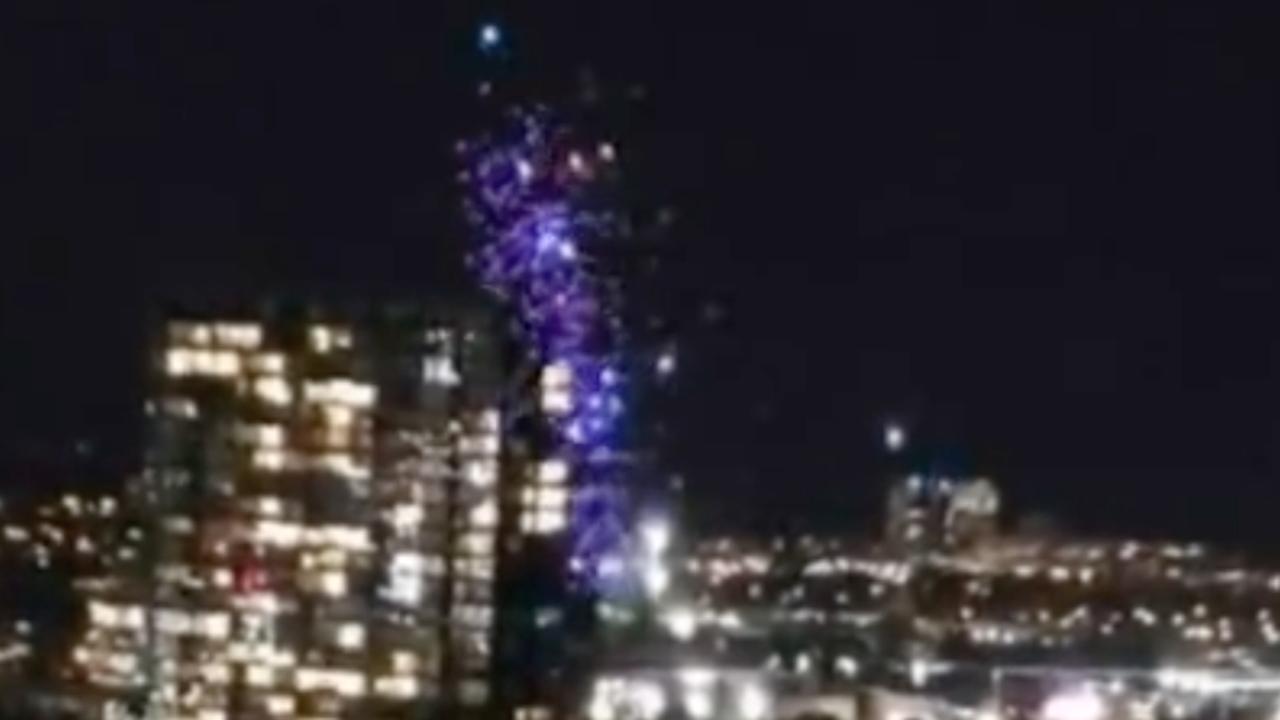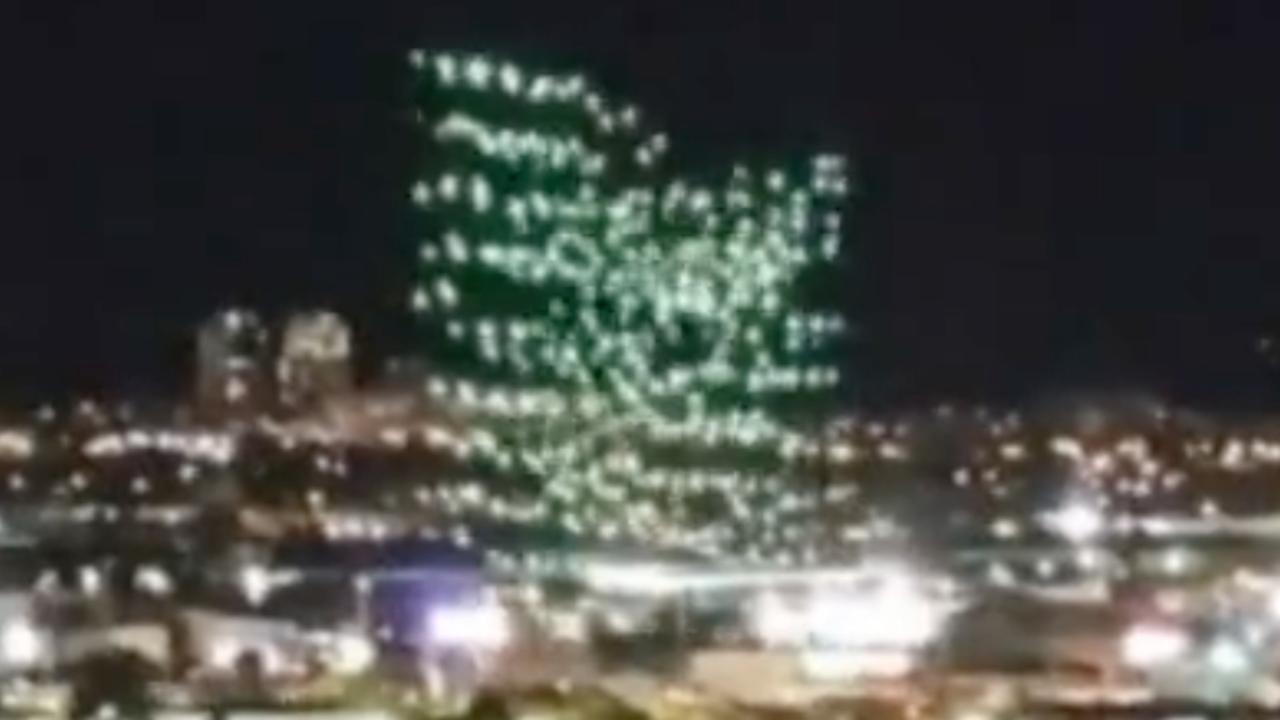Orlando drone show malfunction provides a compelling case study in the challenges of large-scale drone operations. This incident, involving a significant number of drones, highlights the critical interplay between technological advancements, safety protocols, and public perception. The event unfolded rapidly, leaving organizers and spectators alike grappling with the unexpected disruption and its cascading effects. This analysis delves into the technical aspects of the malfunction, explores the regulatory landscape governing drone shows, and examines the public response and media coverage surrounding the incident.
We will dissect the sequence of events, exploring potential causes ranging from software glitches to external interference. The investigation will also consider the adequacy of existing safety protocols and explore improvements for future events. The impact on the show’s organizers, the audience, and the overall reputation of drone technology will also be thoroughly examined.
The Orlando Drone Show Malfunction
The recent drone show malfunction in Orlando serves as a stark reminder of the complexities and potential risks involved in large-scale drone operations. This incident, while seemingly isolated, highlights crucial aspects of safety protocols, technological limitations, and public perception surrounding this rapidly evolving technology. A detailed examination of this event provides valuable insights for improving future drone shows and ensuring public safety.
The Orlando Drone Show Incident: A Detailed Account, Orlando drone show malfunction
The Orlando drone show, featuring hundreds of individually programmed drones, experienced a significant malfunction during its performance. Specific details regarding the exact number of drones and their precise specifications are still emerging, but reports suggest a substantial portion of the drones deviated from their programmed flight paths. This resulted in a chaotic display, with drones appearing to cluster together or fly erratically across the sky.
The malfunction occurred approximately halfway through the scheduled show. Initial signs included a noticeable lag in the synchronization of the drones’ movements, followed by a complete loss of formation and erratic flight patterns. The show was ultimately halted, and the drones were safely landed after a period of controlled descent.
| Time | Event | Impact on Audience | Impact on Organizers |
|---|---|---|---|
| 8:15 PM | Initial signs of desynchronization | Minor confusion and murmurs amongst the audience | Initial attempts at remote control adjustments |
| 8:17 PM | Complete loss of formation and erratic drone flight | Increased concern and audible gasps from the audience | Emergency protocols initiated; attempt to regain control |
| 8:22 PM | Show halted; controlled drone landing initiated | Disappointment and some level of fear among audience members | Significant reputational damage; potential financial losses |
| 8:30 PM | All drones safely landed | Relief, but lingering disappointment | Damage assessment and investigation begins |
Technical Aspects of the Malfunction
Several factors could have contributed to the malfunction. Potential causes range from software glitches within the drones’ flight control systems to hardware failures, including issues with GPS reception or communication systems. External factors, such as unexpected weather conditions or radio frequency interference, also cannot be ruled out. The drone’s flight control system, responsible for maintaining stability, navigation, and communication, played a central role.
A failure in any of these systems could have triggered a cascading effect, leading to the observed erratic behavior. While specific safety protocols employed are not publicly available, a thorough investigation is crucial to determine if these were adequately implemented and followed.
Reports of an Orlando drone show malfunction surfaced recently, raising concerns about the reliability of such large-scale productions. Understanding the complexities involved requires examining the overall planning and execution, which you can learn more about via this resource on the orlando drone show. Ultimately, investigating these malfunctions is crucial to improving safety and preventing future incidents in similar Orlando drone shows.
The following flowchart illustrates a possible sequence of events:
(A detailed flowchart would be included here, visually depicting potential scenarios such as software glitch leading to communication failure, GPS interference causing navigational errors, etc. The flowchart would show decision points and outcomes leading to the malfunction. Due to the limitations of this text-based response, a textual description is provided instead of a visual flowchart.)
Safety and Regulatory Compliance
Similar drone show malfunctions have been reported globally, often attributed to technical issues or environmental factors. Regulations governing drone shows vary across jurisdictions, typically focusing on airspace restrictions, operator licensing, and safety protocols. Best practices include rigorous pre-flight checks, redundant systems, and comprehensive emergency procedures. The Orlando incident underscores the need for even stricter guidelines and more robust safety measures.
The Orlando drone show malfunction highlights the complexities of large-scale drone operations. It’s a stark contrast to the precision, or lack thereof, sometimes seen in military applications, such as the recent ukraine drone attack on russia , where the strategic implications far outweigh the entertainment value. Ultimately, both incidents underscore the need for robust technological reliability and effective safety protocols, regardless of the intended purpose.
- Implement mandatory pre-flight simulations to test drone responsiveness and system integrity.
- Increase the redundancy of control systems to minimize the impact of single-point failures.
- Develop improved real-time monitoring and intervention capabilities for immediate corrective actions.
- Establish stricter licensing requirements for drone show operators, including mandatory training on emergency protocols.
- Enhance communication systems to ensure seamless information exchange between drones and the control center.
Public Perception and Media Coverage
Social media reacted swiftly to the event, with a mix of concern, amusement, and criticism. News reports varied in their tone and focus, some highlighting the technological marvel of the drones, while others emphasized the safety concerns raised by the malfunction. Themes emerging from the public discourse include concerns about public safety, questions about the reliability of drone technology, and scrutiny of the show organizers’ preparedness.
The incident’s impact on the reputation of the organizers and the drone technology involved remains to be fully assessed.
Post-Incident Response and Recovery
The show organizers initiated a comprehensive investigation into the root cause of the malfunction. Communication with the audience was handled through official channels, addressing concerns and providing updates on the investigation’s progress. No significant damage was reported beyond the disruption of the show itself. The steps taken to investigate the incident and determine the root cause are critical to preventing future incidents.
The recent Orlando drone show malfunction, with its unexpected mid-air pauses and erratic movements, highlights the complexities of large-scale drone displays. This incident prompts reflection on the overall safety and planning involved in such events, contrasting sharply with the seemingly seamless performances often seen, such as those showcased at a florida drone show. Understanding the Orlando incident requires a deeper dive into the technical aspects and preventative measures needed to avoid similar future malfunctions.
Illustrative Depiction of the Malfunction
The visual aspect of the malfunction involved drones veering off course, creating an unplanned and chaotic light display. The initial subtle desynchronization quickly escalated into a complete breakdown of formation, with drones moving erratically and independently. Reports suggest an accompanying sound of whirring motors and the sudden cessation of the coordinated light patterns. The audience’s reaction ranged from gasps and murmurs to a collective sense of surprise and disappointment as the planned aesthetic of the show was completely lost.
The Orlando drone show malfunction serves as a stark reminder of the potential risks associated with increasingly sophisticated drone technology. While advancements in autonomous flight capabilities offer breathtaking spectacles, robust safety measures and rigorous regulatory oversight are paramount. The incident underscores the need for comprehensive pre-flight checks, meticulous planning, and a proactive approach to addressing potential malfunctions. By learning from this experience, the drone show industry can strive to enhance safety protocols, improve public trust, and prevent similar incidents in the future, ensuring that these technological marvels continue to captivate audiences safely and reliably.
Top FAQs
What type of drones were involved in the Orlando drone show?
This information will be detailed in the full report, specifying manufacturer, model, and key specifications.
Were there any injuries reported as a result of the malfunction?
A comprehensive account of injuries, if any, will be included in the analysis.
What was the estimated cost of the damages resulting from the malfunction?
The financial impact of the malfunction on the show’s organizers will be assessed and detailed.
What legal ramifications, if any, arose from the incident?
Any legal actions or investigations initiated following the incident will be discussed.


